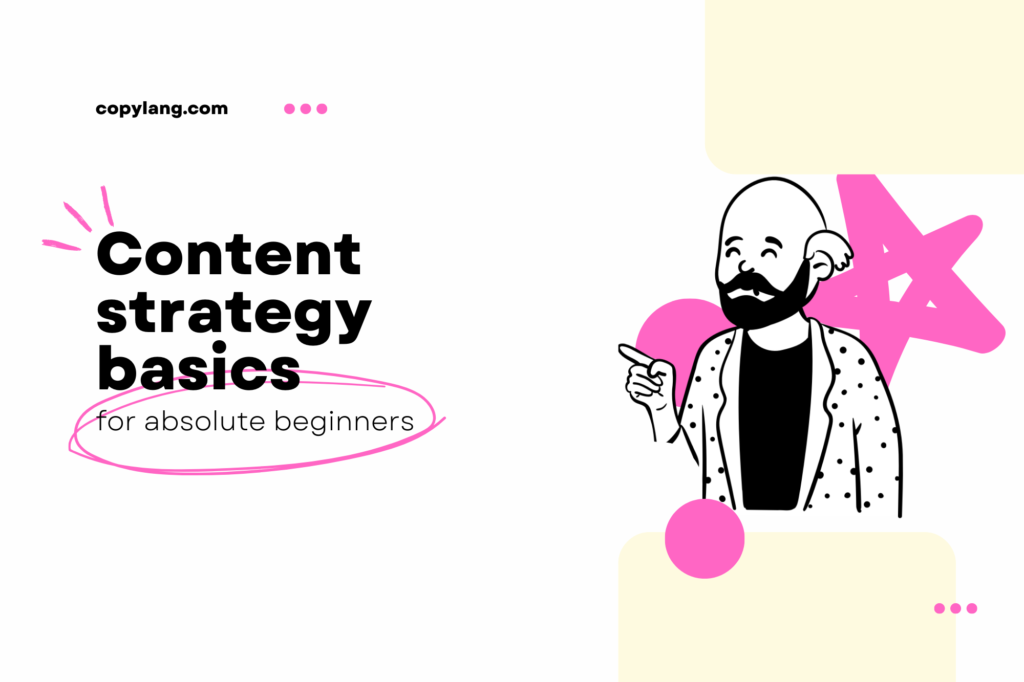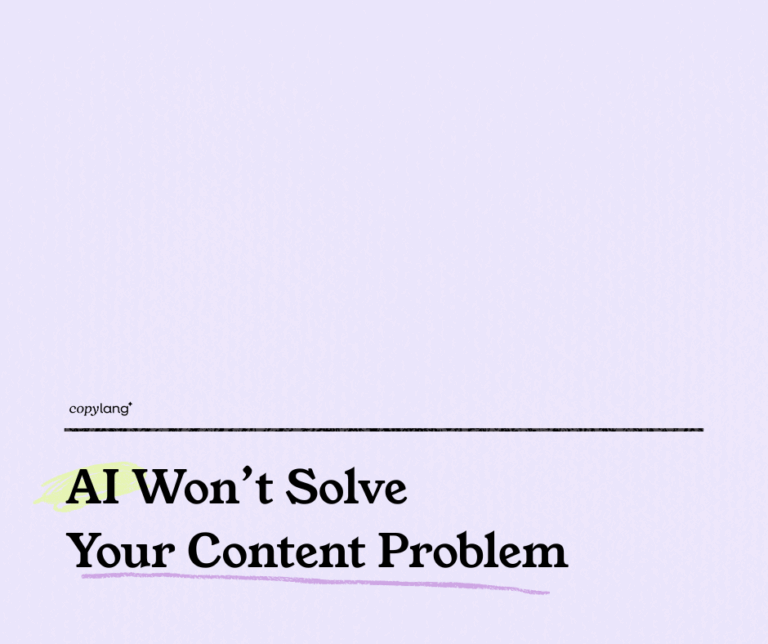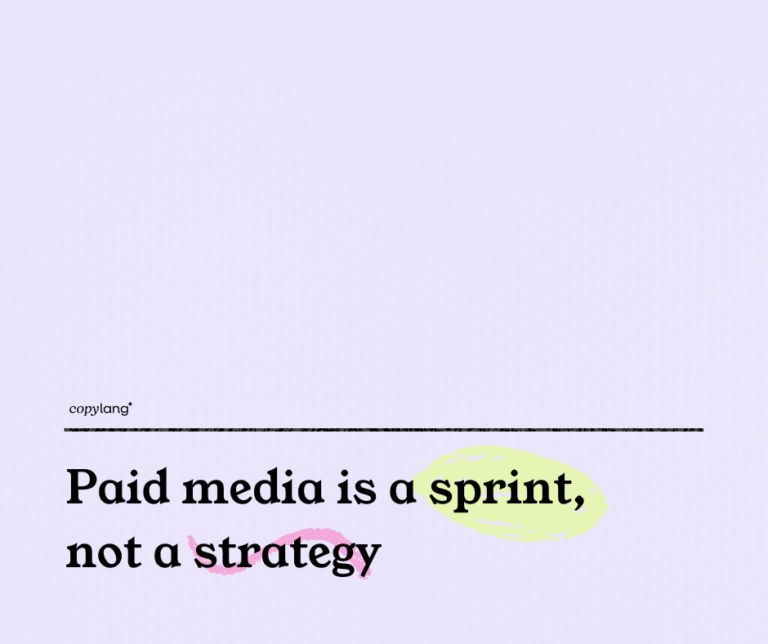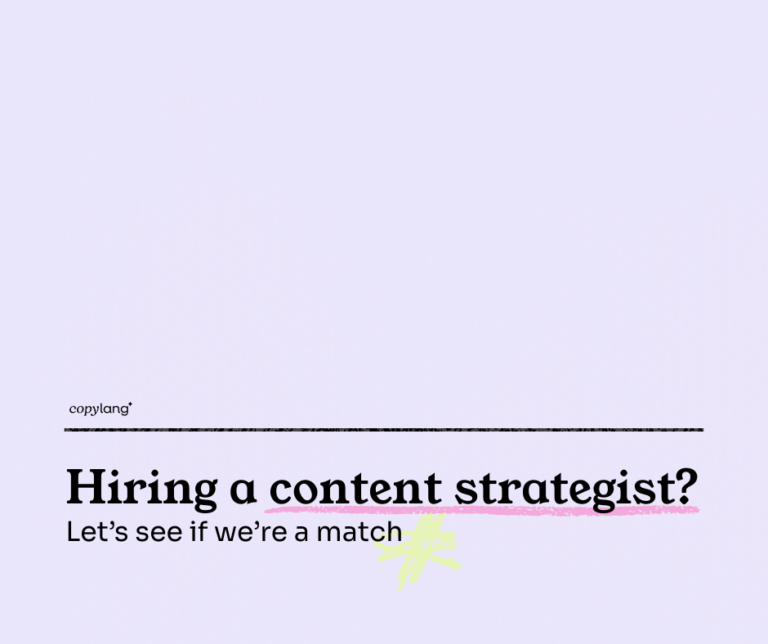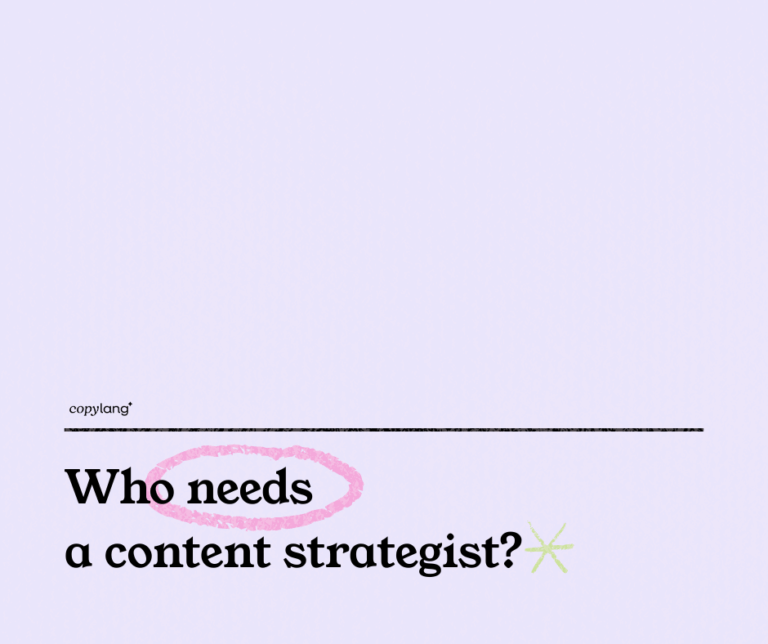Everyone and their aunt Vicky loves to throw around the phrase “content strategist” these days – but what does a content strategist actually do?
TL;DR: we create — and execute — tailored content strategies that help you achieve your business goals.
At a more granular level, this means:
Conducting Content Audits and Gap Analysis
Think of this as a content health check. A diagnostic exam. Looking under the hood.
Content audits allow strategists to establish clear baselines to see what we’re working with.
During a content audit, we:
- evaluate existing content and resources
- identify what’s working (and what isn’t)
- research top competitors and niche influencers
- spot gaps in your content coverage —
- — and find opportunities for improvement or repurposing
The audit is arguably the nerdiest aspect of content strategy — and my favorite part of the whole process.
Aligning Content with Business Goals
Content strategists are your growth partners. We don’t just create content for kicks. Instead, we ensure every piece of content serves a specific purpose in your business strategy, whether that’s:
- generating leads
- nurturing prospects
- or supporting sales conversations.
At Copylang, for instance, we begin every project with a Content Strategy Deep Dive, where we discuss the things you want to achieve with content marketing.
With clear goals in place, we can then create and implement a game plan that helps you achieve them.
In-depth audience research
Audience research makes up a huge chunk of a content strategist’s tasks. I personally believe that your audience should be at the center of your strategy. After all, you’re creating content for them. Understanding your audience is key to creating content that resonates and converts.
We cover a lot of your audience information during the Content Strategy Deep Dive. And when I say deep dive, I do mean deep dive.
Your ideal customers are not cardboard cutouts, so we try our best to cover nuances and traits beyond the usual demographic data.
This is where psychographics come in:
Psychographics include your audience’s:
- pain points
- values and goals
- objections to the sale —
- — and a lot more
With fleshed-out personas, we can then create content that truly connects with your audience.
Developing Brand Voice and Content Guidelines
Determining your audience is just one part of the equation — we also have to make sure that your content has a consistent brand voice that (1) your audience trusts and identifies with and (2) represents your brand values.
At this stage, we identify what your brand voice is and what it’s not, creating content guidelines that ensure your content remains consistent, on-brand, and effective across all channels and team members.
Brand and content guidelines come in especially handy when delegating content tasks to writers or even when generating AI-assisted posts.
Putting It All Together: The Content Gameplan
After doing *all* that research, we then consolidate it to create the master plan that guides all content creation: your custom Content Gameplan.
The Content Gameplan goes way beyond your typical content calendar — it’s a comprehensive document that contains all the info we mentioned above plus expert recommendations on:
- your main content pillars
- topic matrix
- formats, frameworks, and cadence
- repurposing and distribution plans —
- — and a whole lot more
The goal of the Content Gameplan is to guide your team’s content marketing efforts so that it never feels like you’re throwing spaghetti while blindfolded. It serves as your compass, allowing your team to move in one purposeful direction toward a common goal.
Beyond strategy
Some companies only need strategy; others need more hands-on help.
Part of a content strategist’s job is to help you execute your strategy and manage content operations.
This includes:
- managing content calendars
- creating project briefs
- overseeing content creation —
- — and setting up systems that make content production efficient and scalable.
Content ops often fall on the founder (super busy), people manager (may not have technical expertise), or senior writer (who is wearing 12 other hats). With a content strategist, your team can focus on their tasks without being bogged down by content admin.
Who Needs a Content Strategist?
You might need a content strategist if:
- You’re creating content regularly but not seeing results
- Your team has writing talent but lacks strategic direction
- You don’t have the time or bandwidth to oversee content marketing efforts
- You’re spending on content without clear ROI
- Your content isn’t generating leads or supporting sales
- You’re struggling to compete with larger competitors
- You want to scale your content operations efficiently
I’ve worked with growth-ready businesses in the ecommerce, SaaS, and B2B service spaces to get their content strategy up and running in the right direction. These are often businesses that already have product-market fit and are looking to grow their businesses through content.
On the flip side, you might NOT need a content strategist if:
- You’re just starting out and testing the waters. I highly recommend that you invest your resources in finding proof of concept and market fit before investing in content strategy.
- You don’t have at least one (1) existing content marketing channel. Content strategy without execution is just a sad PDF. I don’t want it to sit around on your Google doc after delivery! Secure a website or social channel first, get some basic visual branding (even a one-pager) — and then we’ll talk.
- You’re looking for quick fixes rather than strategic solutions – Content is a great vehicle for sustainable growth. That said, it’s all about playing the long game. If you are starting from scratch, expect to put in 3-6 months of work. If you are looking for instant results, paid media could be a better solution.
Turn Content into a Growth Engine with a Content Strategist
A content strategist isn’t just a fancy marketing buzzword. We’re real people who want to help you get the most out of your content marketing efforts. 🙂
The right strategist can help transform your content from a cost center into a revenue driver. To learn more about content strategy and how it can help your business, send us a message at hello@copylang.com. I’ll be happy to answer your questions!



